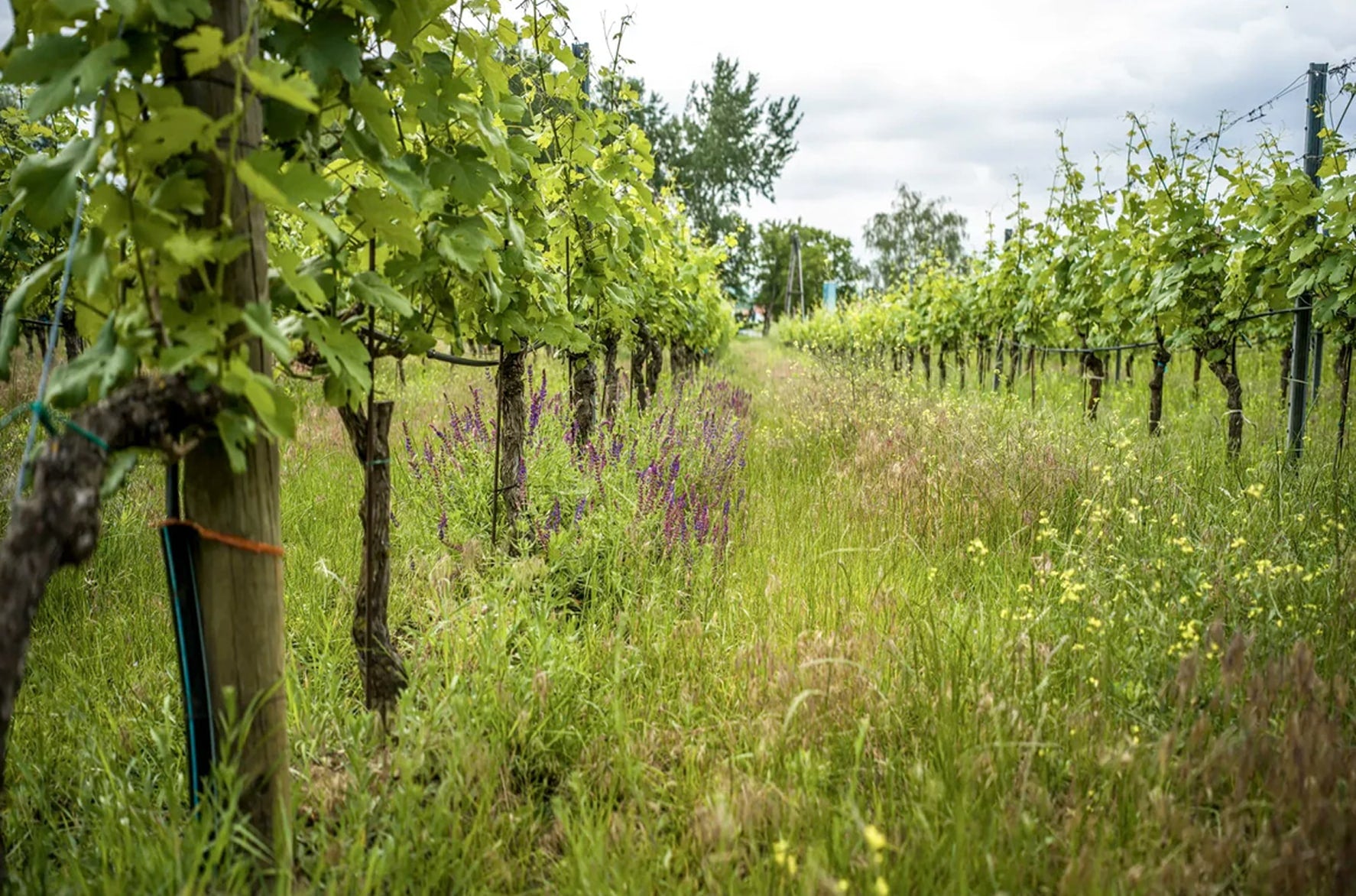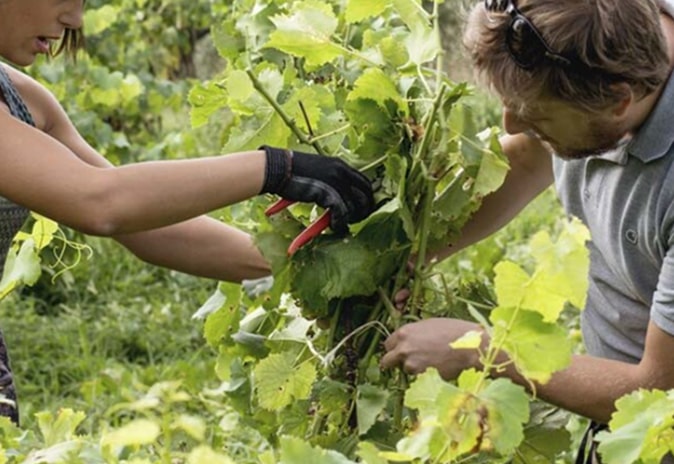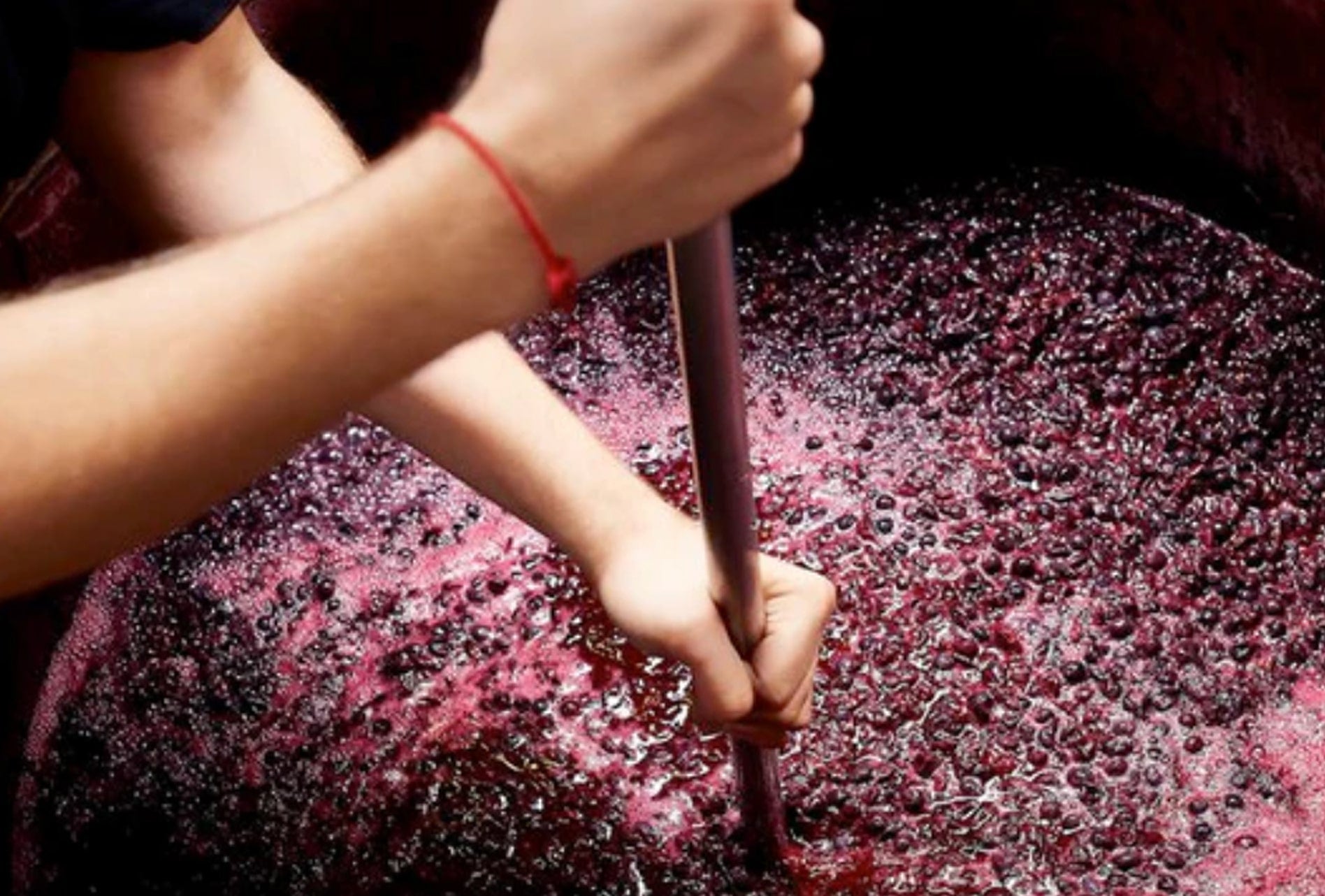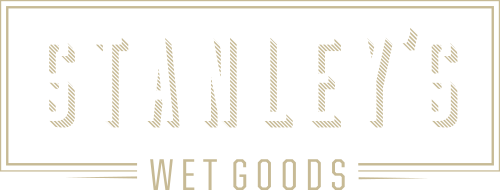A WINE LOVER’S GUIDE
TO WHAT’S REALLY IN YOUR BOTTLE
Ever stare at a bottle of wine and wonder what exactly went into making it? Sure, it’s fermented grape juice, but there’s a world of decisions - farming choices, fermentation methods, and winemaking techniques - that shape what’s in your glass. Some winemakers lean into nature, letting wild yeast and lunar cycles do the work, while others (not our jam) prefer a more hands-on approach with lab-cultured yeast and a pinch (or heavy dose) of modern science. If you love wine like we do, understanding how it’s made can add a whole new layer of appreciation. So, let’s dive into some of the key farming and winemaking approaches - casual but detailed, because wine is serious business, but it should also be fun.
There’s notes like this at the end of each section regarding our philosophy about each of these approaches to farming and wine- making.
ORGANIC FARMING: CLEAN GRAPES, NO CHEMICAL SHOWERS
BIODYNAMIC FARMING: LIKE ORGAN- IC, BUT WITH A COSMIC TWIST
DRY FARMING: WHEN VINES HAVE TO FEND FOR THEMSELVES
REGENERATIVE FARMING: HEALING THE LAND WHILE MAKING GREAT WINE
NATIVE YEAST FERMENTATION: LET- TING NATURE TAKE THE LEAD
PIED DE CUVE: THE NATURAL START- ER CULTURE
NO ADDITIVE WINEMAKING: JUST GRAPES, TIME, AND A LITTLE LUCK
SULFUR IN WINE: FRIEND OR FOE?
Organic farming is all about ditching synthetic chemicals - no lab-made pesticides, herbicides, or fertilizers. Instead, vineyard managers rely on natural, organic treatments to guard against disease in the vineyard. And in some cases, farmers will also employ things like compost, cover crops, and natural predators (think ladybugs versus aphids) to keep things in balance.
That said, organic farming isn’t always easy, especially in places where mildew and disease love to thrive. Copper sulfate (a naturally occurring but controversial fungicide) is often the organic answer to vineyard diseases, but it can build up in the soil over time. In short, organic wine doesn’t necessarily mean zero intervention - it just means no synthetic shortcuts.
Organic farming (not necessarily certified) is the minimum standard for all wines we sell.
Biodynamic farming is organic farming’s eccentric cousin. It follows all the same no-synthetic-chemicals rules but layers in a whole philosophy about treating the vineyard as a self-sustaining ecosystem. Oh, and it follows a vine treatment and harvesting calendar based on lunar cycles - because according to biodynamic principles, the moon influences plant growth just like it moves the tides.
One of the most famous (and misunderstood) biodynamic practices is Preparation 500 - which involves stuffing cow horns with composted manure, burying them underground for months, then digging them up and making a vineyard “tea” out of the contents. Sound weird? Maybe. But many biodynamic farmers swear by the results: healthier vines, better soil, and wines with a stronger sense of place.
Biodynamic wines often taste more “alive” - whether that’s because of the farming or the philosophy is up for debate. But one thing’s for sure: a lot of the world’s most sought-after wineries, from Burgundy to California, are embracing biodynamics, and the results speak for themselves.
Whenever possible, we indicate when a wine is made using biodynamically farmed grapes (some certified, some not). It is not a requirement for us.


Dry farming is exactly what it sounds like - no irrigation, just natural rainfall. The idea is that vines that struggle a little (by being forced to send their roots deep into the earth for water) produce grapes with more concentrated flavors and a truer reflection of the land.
This method is common in classic wine regions like Bordeaux, Burgundy, and the Rhône Valley, where there’s enough rainfall to support it. In places with hotter, drier climates, dry farming is trickier but still possible - especially with old vines that have developed deep root systems over decades.
Aside from producing intensely flavored grapes, dry farming is also great for sustainability. It conserves water and promotes healthier soils. The catch? If there’s a drought, yields can suffer. But many winemakers believe the trade-off is worth it for wines with more structure, complexity, and a true sense of terroir.
Whenever possible, we indicate when a wine is made using dry farmed grapes. It is not a requirement for us, but the vast majority of what we sell is dry farmed.
Regenerative farming is a big step beyond organic - it’s not just about avoiding chemicals but actively improving the soil and ecosystem. The goal is to increase biodiversity, improve soil health, and even capture carbon from the atmosphere, making it a win for both vineyards and the planet.
Techniques include:
- Minimal or no tilling (to preserve the delicate microbiome of the soil)
- Cover cropping (planting vegetation between vines to improve soil health)
- Composting (turning vineyard waste into nutrient-rich fertilizer)
- Grazing animals (sheep, cows, and chickens naturally fertilize and keep weeds in check)
The end result? Undisturbed top soil layers have more microbial concentration and diversity, leading to stronger and healthier vines, and wines that taste more alive. Some of the best natural winemakers are going all-in on regenerative farming, proving that sustainability and top-quality wine can go hand in hand.
Whenever possible, we indicate when a wine is made from vineyards employing regenerative farming practices (some certified, some not). It is not a requirement for us.
Most commercial wines are made with lab-cultured yeasts that are predictable and efficient - like following a recipe to a T. Native yeast fermentation, on the other hand, is the wild card approach. Instead of adding yeast, winemakers let the fermentation start naturally with the wild yeasts living on the grape skins and in the winery.
The upside? More complex, site-specific flavors. Since different yeast strains contribute different aromas and textures, native fermentations can lead to wines that feel more unique and expressive. The downside? Fermentation might be slow, unpredictable, or even stop halfway, leaving residual sugar in the wine.
But for winemakers who are ok going with the flow, native yeast fermentation is worth it. It’s part of what gives many natural wines their vibrant, dynamic character.
Native fermentations (which can include the pied de cuve method) are a requirement for any wine we sell.
Pied de cuve is a trick winemakers use to give native yeast fermentation a little boost. Instead of throwing all their grapes into a tank and hoping for the best, they ferment a small batch first (sometimes in the vineyard to capture other organic matter floating in the air, leading to a stronger sense of terroir), then use that actively fermenting juice to kick-start the rest of the wine.
Think of it like making sourdough bread - you wouldn’t just mix flour and water and hope for magic. You use a starter culture to get things moving in the right direction. Pied de cuve helps ensure fermentation happens smoothly while still keeping all the complexity of wild yeasts intact.
This method is especially useful in cooler regions, where native yeast populations can be slower to get going. It’s a way to embrace natural fermentation while minimizing the risk of things going sideways.
Native fermentations (which can include the pied de cuve method) are a requirement for any wine we sell.
No additive winemaking is exactly what it sounds like - grapes go into the fermenter, and wine comes out. No commercial yeast, no tannin powder, no acid adjustments, no stabilizers, no wood chips, no filtering agents. Just the fruit, its natural yeasts, and a whole lot of patience.
Most conventional wines rely on a laundry list of additives to tweak flavors, adjust acidity, or fix any fermentation hiccups. For example, winemakers might add tartaric acid to brighten up flabby grapes, enzymes to enhance aromas, or fining agents (like egg whites or bentonite clay) to clarify the wine. These additives help ensure consistency, making wines taste and feel the same year after year - but they also steer the wine away from its raw, unaltered expression. With no-additive winemaking, what you see (or taste) is what you get. These wines can be wildly expressive, full of texture and life, but they can also be unpredictable. A winemaker working this way has to be hyper-vigilant, because there’s nothing to fall back on if things go sideways. When it works, you get a wine that feels energetic and brimming with personality. When it doesn’t... well, let’s just say some wines are a little too interesting.
No-additive winemaking is high risk, high reward, but for those who love it, there’s nothing quite like drinking a wine that’s truly unaltered - a direct translation of the vineyard, the vintage, and the hands that made it.
Additive-free wine (with the possible exception of small additions of sulfur dioxide - read on) is a requirement for every bottle of wine we sell. Additives are never allowed, so we do not indicate that a wine is additive-free in our tech notes.
Sulfur dioxide (SO2) is one of the most misunderstood ingredients in wine. It’s been used for centuries to keep wines from spoiling and turning into vinegar. Every wine contains some sulfites because they’re a natural byproduct of fermentation - but some winemakers add extra to stabilize the wine.
Too much sulfur can mute a wine’s aromatics and flavors, making it feel lifeless. But too little can leave the wine vulnerable to oxidation or bacterial faults. The trick is balance. Many natural winemakers aim for low sulfur additions (under 50 ppm) to preserve freshness while keeping the wine stable.
Some winemakers take things even further and make wine with zero added sulfur - sometimes labeled “zero-zero” (nothing added, nothing taken away). The result? Wines that are raw, energetic, with a totally unfiltered personality. But there’s a catch - no-sulfur wines can be very delicate. They can spoil more easily, develop funky aromas, or change dramatically depending on storage conditions. When they’re good, they’re great - vivid, textural, and full of life. When they go wrong... well, let’s just say they’re not for the faint of heart.
While we are not dogmatic about specific total sulfur content numbers in finished wines, we only sell wines with low or no additions of sulfur, and whenever possible, indicate them as such in their tech notes.


Ever pour a glass of wine and notice it’s a little cloudy? Maybe there’s some sediment hanging out at the bottom? That’s because it hasn’t been filtered or fined - and that’s on purpose.
Most commercial wines go through some kind of clarification process to make them look crystal clear. Fining is the first step - it’s like giving the wine a quick polish. Winemakers add substances like egg whites, bentonite clay, or fish bladders (yes, really) to bind with tiny particles and pull them out of suspension. Filtering takes it a step further, straining out any remaining solids, yeast, or bacteria. The result? A squeaky-clean wine with a polished appearance and a long shelf life (although it may not develop as much complexity as a non-filtered wine while aging).
But here’s the catch - while filtering and fining make wines look pretty, they also strip out some of the texture, complexity, and tiny flavor compounds that give a wine character. Unfiltered, unfined wines keep all those natural bits intact, resulting in more expressive aromatics, vivid flavors, and a slightly wilder, more dynamic personality.
Although unfined and unfiltered wine is not a strict requirement for us, the vast majority (>99%) of what we sell is both unfined and unfiltered. Whenever possible, if wines are fined or filtered, we denote that in the tech notes.
So, whether you’re into biodynamic magic, dry-farmed intensity, or the wild ride of zero-sulfur wines, we hope that understanding how wine is made deepens your appreciation for what’s in your glass. At the end of the day, the best wine is the one you love drinking - whatever path it took to get there.
Cheers!
